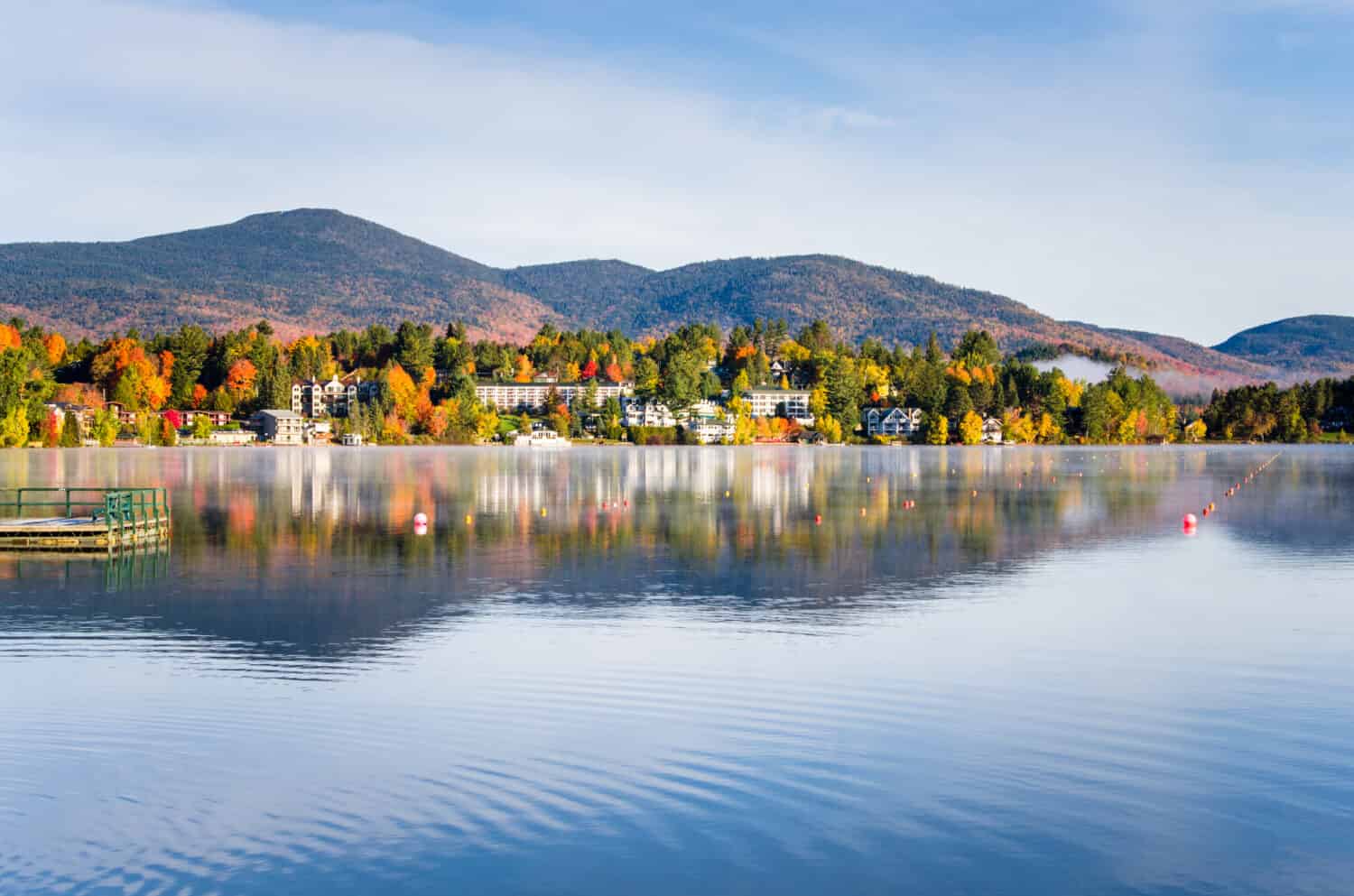Greetings from the world of Lake Placid, where mysteries lie just under the water’s surface. This picturesque lake, located in the center of the stunning Adirondack Mountains, is well known for its enigmatic residents. Lake Placid has a rich ecology alive with life, from its calm waters to the lush forests around it.
The lake has a lot more to offer than only reptiles. Despite the fact, the name maybe conjure visions of a very infamous crocodile. These waterways are home to a wide variety of fish, from the ravenous Northern pike to the nimble smallmouth bass.
But there are other creatures in the depths of Lake Placid other than fish! A variety of aquatic invertebrates, including snails and crayfish, may be found below the shimmering surface. They all contribute to the complex food web. Not to mention the abundant wildlife that adorns the lake’s borders. Elegant loons dive under majestic eagles, creating a symphony of sights and sounds.
In this article, you’ll learn about the delicate balance between these many animals and their environment as you explore Lake Placid’s natural treasures. Join us as we explore the mysterious wonders and the complex web of life that exists in Lake Placid’s depths!
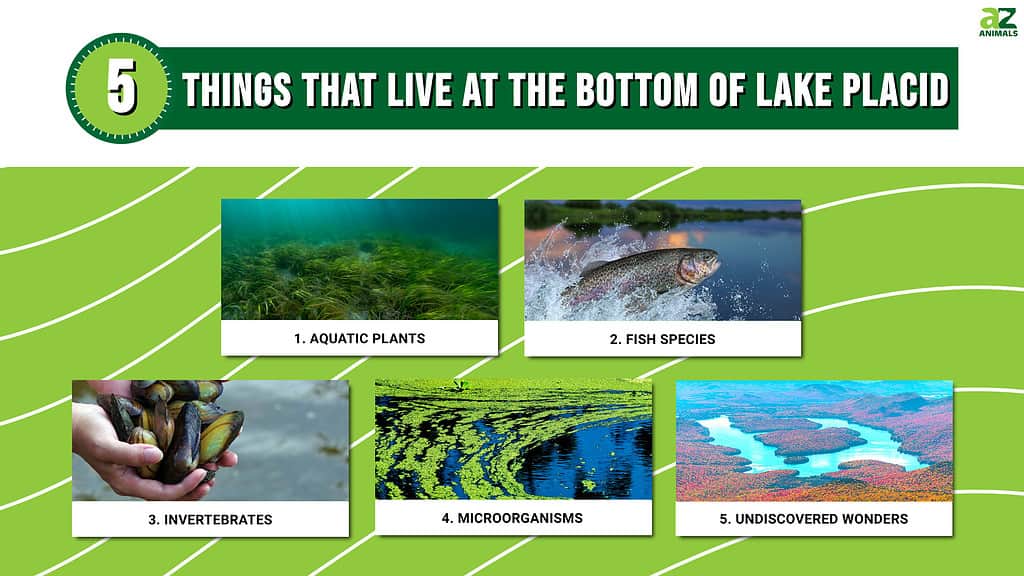
What is Lake Placid?
Upstate New York’s Lake Placid is a mesmerizing location tucked away in the majestic Adirondack Mountains. It is a charming community with amazing natural beauty and lengthy history. This quaint town provides a wealth of fascinating activities for outdoor enthusiasts, history fans, and environment lovers alike. It is located close to the serene waters of Mirror Lake and the larger Lake Placid.
When you arrive at Lake Placid, you’ll experience a calm and quiet ambiance that’s ideal for exploration and relaxation. The region is well known for its stunning scenery, which includes imposing mountains, lush woods, and clear lakes. These natural treasures provide a picturesque backdrop that enchants the senses. It provides a genuine retreat from the stress of daily life.

Lake Placid is one of New York state’s most stunning natural wonders.
The Village of Lake Placid
The village of Lake Placid is a lively and cheerful place with kind residents who take pride in their history. Inviting eateries, quaint stores, and comfortable cafes adorn the streets, giving guests a great experience as they stroll about the neighborhood. The town’s rich history is reflected in the buildings’ architectural design, which combines rustic beauty with contemporary conveniences.
Sports and Activities
Winter sports and outdoor activities have been linked to Lake Placid for a long time. As the venue for the Winter Olympic Games in 1932 and 1980, it attained worldwide recognition. The Olympics left a lasting impression on the community. With top-notch facilities for skiing, snowboarding, ice skating, and bobsledding, Lake Placid is still a sanctuary for fans of winter sports today. Winters in the area are snowy. The snow changes the scenery into a winter paradise that draws visitors and athletes from all over the world.
But Lake Placid isn’t simply a winter vacation spot. The region transforms into a paradise for outdoor pursuits throughout the warmer months. Through the surrounding mountains, there are hiking and mountain bike paths. The options provide spectacular views and chances to get close to nature. The lakes provide a range of water sports, including kayaking, swimming, boating, and fishing, allowing tourists to cool down and enjoy the summertime.
Culture and History
Beyond its scenic surroundings and fun activities, Lake Placid is a culturally and historically significant area. The town has several historical landmarks and museums that provide a window into the past of the area. The Adirondack Historical Society Museum offers a greater knowledge of the history and culture of the region. The Lake Placid Olympic Museum highlights the town’s Olympic past.
In addition to its recreational opportunities and visual appeal, Lake Placid is a location where one may relax and re-energize. There are a variety of lodging options available in the region, including pleasant resorts, attractive bed and breakfasts, and cozy lodges, to meet the interests of every guest. The tranquil surroundings and warm welcome of the inhabitants make for the perfect environment for rest and reflection.
The Mysteries of Lake Placid
Lake Placid is a place of captivating beauty nestled in the heart of the Adirondack Mountains. The lake holds within its serene waters and lush surroundings a tapestry of mysteries waiting to be unraveled. From legends of elusive creatures to historical enigmas, this charming lake and the surrounding area have intrigued both locals and visitors alike with their intriguing secrets.
The Legend of Champ: A Mysterious Creature
Deep within the depths of Lake Champlain, which stretches into the realm of Lake Placid, resides a legendary creature known as Champ. Tales of Champ have circulated among the locals for centuries, describing a massive, serpentine-like creature that haunts the lake’s waters. Numerous eyewitness accounts and grainy photographs have fueled speculation and intrigue, leading some to believe that Champ may be a remnant of prehistoric times or an undiscovered species. Though skeptics dismiss the claims as mere folklore, the allure of encountering Champ remains a tantalizing mystery for those who venture into the lake’s depths.
The Ghostly Whispers of the Whiteface Mountain
Whiteface Mountain, a majestic peak overlooking Lake Placid, holds more than breathtaking vistas. It is said to be shrouded in ghostly whispers and unexplained phenomena. Locals have shared chilling tales of apparitions glimpsed in the mist, echoing laughter carried by the wind, and inexplicable feelings of being watched. Some believe that the spirits of Native American tribes, who revered the mountain as sacred, continue to linger among the towering trees and hidden trails. Whether these spectral encounters stem from overactive imaginations or a genuine connection to the past, the mysterious allure of Whiteface Mountain beckons those with a fascination for the supernatural.
The Enigmatic Secrets of the Adirondack Forest
The dense and captivating Adirondack Forest that blankets the region surrounding Lake Placid holds its share of enigmatic secrets. Legends of hidden treasure buried by outlaws and settlers have inspired countless treasure hunters to explore the depths of the wilderness in search of fortune. Yet, the elusive treasures remain concealed, adding to the allure and mystique of the vast and untamed landscape. As you traverse the ancient trails and listen to the rustling leaves, you can’t help but wonder if the secrets of the forest will ever reveal themselves.
With these spooky mysteries in mind, there’s one thing that is not a mystery: Lake Placid is teeming with fascinating, beautiful, and scary creatures. Let’s take a look at some of them.
What Lives at the Bottom of Lake Placid?
Beneath the tranquil surface of Lake Placid lies a hidden world brimming with life and intrigue. Exploring the depths of this captivating lake reveals a diverse ecosystem, where a fascinating array of creatures thrive.
1. Aquatic Plants

Eelgrass provides a habitat for fish and other aquatic organisms in Lake Placid.
©inusuke/iStock via Getty Images
At the bottom of Lake Placid, a lush underwater oasis unfolds. Aquatic plants play a crucial role in this vibrant ecosystem, providing shelter, food, and oxygen for the inhabitants. Delicate strands of eelgrass sway with the currents, while colorful beds of water lilies create a picturesque scene. These plants not only enhance the beauty of the lake but also serve as vital habitats for fish, insects, and other aquatic organisms.
2. Fish Species
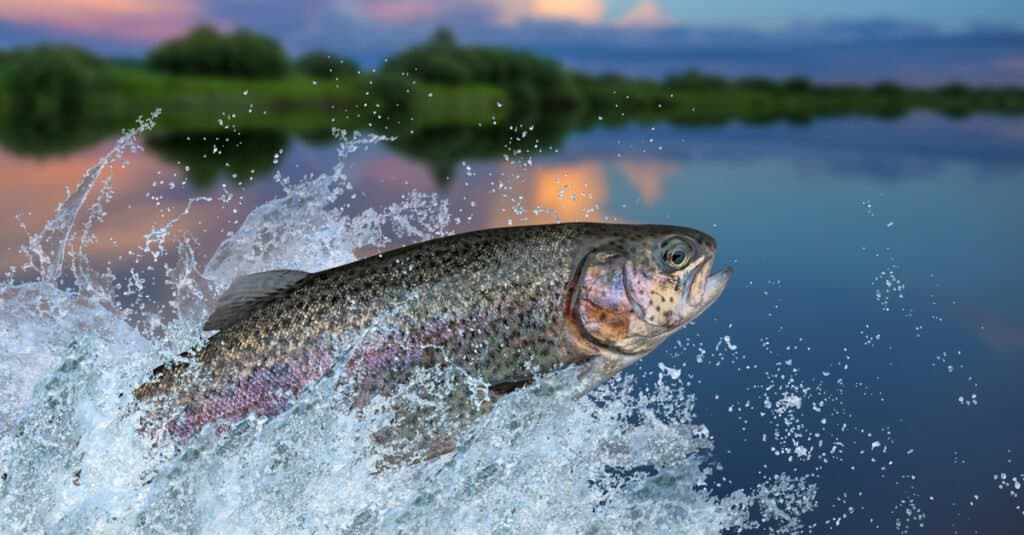
Rainbow trout are commonly found throughout the United States, but they have significant populations in Lake Placid.
©FedBul/Shutterstock.com
Lake Placid is home to a variety of fish species, each adapted to its specific niche in the ecosystem. Among the prominent inhabitants are Lake Trout, known for their strength and size. Rainbow Trout, Smallmouth Bass, and Yellow Perch also thrive in the depths of the lake. These fish species contribute to the delicate balance of the underwater community, fulfilling different roles as predator or prey. Their presence ensures a diverse and interconnected food chain.
3. Invertebrates
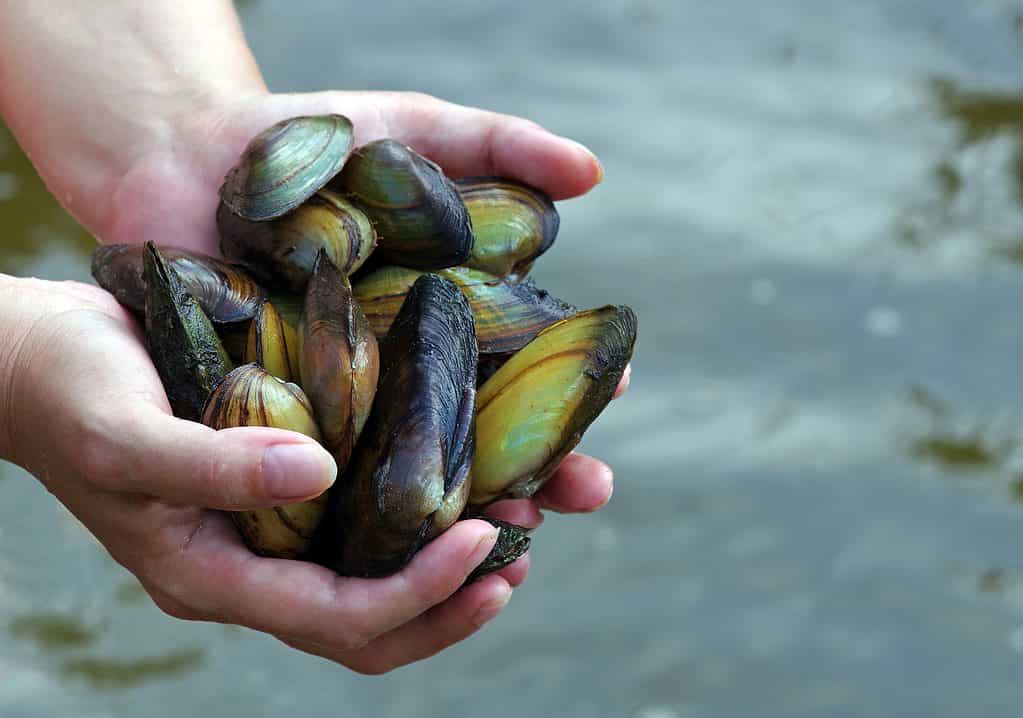
Mussels, snails, and crayfish can be found in Lake Placid.
©KRIACHKO OLEKSII/Shutterstock.com
The bottom of Lake Placid teems with a multitude of invertebrates, which form a vital part of the lake’s food web. Snails, mussels, and crayfish are among the inhabitants that play important roles in nutrient cycling and the overall health of the ecosystem. These small yet remarkable creatures are integral to the underwater world, contributing to its intricate biodiversity.
4. Microorganisms
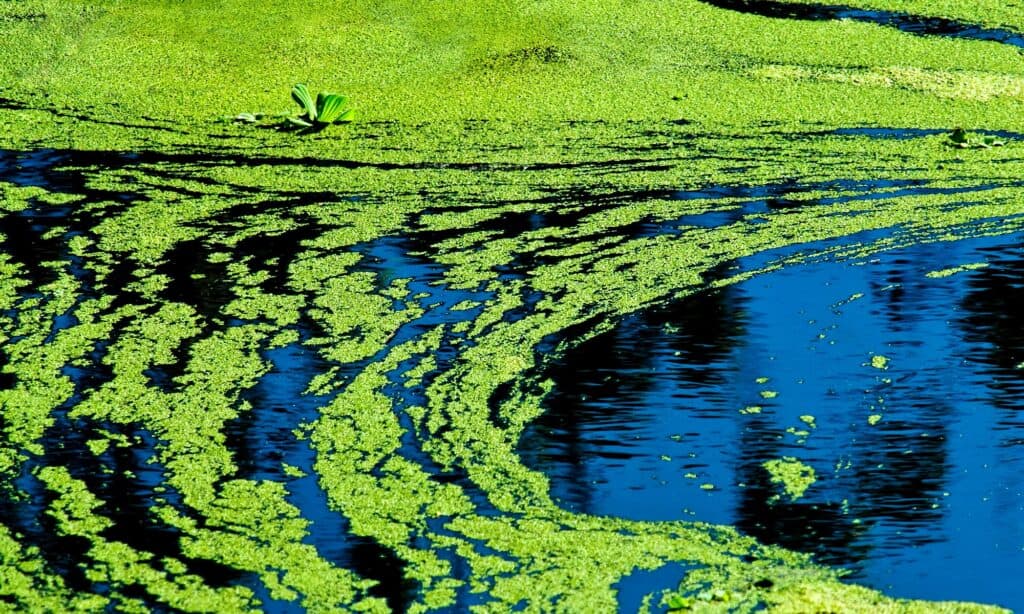
Algae are essential to the health of an underwater ecosystem.
©iStock.com/Alexlky
Beyond the visible inhabitants, Lake Placid’s depths harbor an invisible world of microorganisms. These microscopic creatures, including bacteria and algae, are essential to the health and balance of the underwater ecosystem. They perform crucial tasks such as decomposing organic matter, recycling nutrients and providing food sources for other organisms. Although often unseen, the microorganisms of Lake Placid’s depths are indispensable in maintaining the vitality of the ecosystem.
5. Undiscovered Wonders
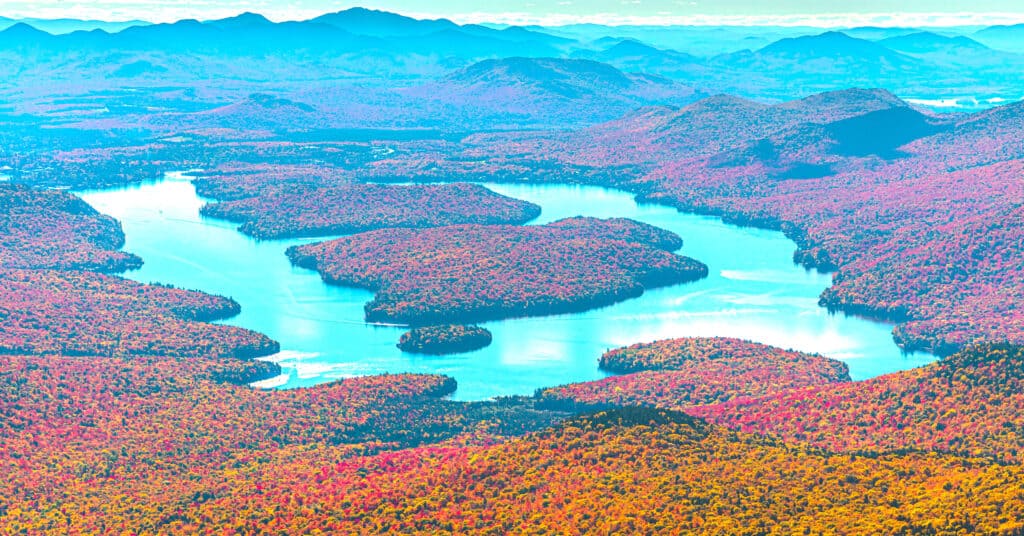
The depths of Lake Placid still hold mysteries and potential discoveries.
©iStock.com/Scott Ricks
While scientists have explored Lake Placid, its depths still hold mysteries and potential discoveries. The vastness and complexity of the underwater environment leave room for the existence of undiscovered species or hidden phenomena. With advancements in technology and ongoing research efforts, new insights into the depths may continue to unveil previously unknown wonders, adding to the fascination of Lake Placid’s underwater world.
Preserving the Underwater Habitat
Recognizing the significance of Lake Placid’s underwater habitat, conservation efforts are in place to protect and sustain its delicate balance. Environmental initiatives aim to ensure water quality, regulate fishing practices, and minimize pollution. By preserving the underwater habitat, we can safeguard the diverse array of species and maintain the ecological integrity of Lake Placid for future generations to appreciate.
What are the Scariest Creatures Near Lake Placid?
Northern Copperhead
Hidden among the rocks and wooded areas surrounding Lake Placid lurks the northern copperhead, a very venomous snake. Recognizable by its distinctive copper-colored head and hourglass-shaped markings on its body, the copperhead possesses a potent venom that can cause severe harm if bitten. While encounters with this venomous reptile are rare, hikers and nature enthusiasts should exercise caution and remain vigilant when exploring the region’s trails and rocky terrain.
Eastern Timber Rattlesnake
Another venomous snake that inhabits the outskirts of Lake Placid is the Eastern timber rattlesnake. Camouflaged with a patterned brown and black coloration, this impressive creature possesses a rattle at the end of its tail, serving as a warning to potential threats. Although timber rattlesnakes generally avoid human contact, it is crucial to be aware of their presence and maintain a safe distance if encountered. Trekkers exploring the wilder areas surrounding Lake Placid should stay attentive and respect the habitat of these venomous predators.
Black Bears
The dense forests surrounding Lake Placid are home to a thriving population of black bears. These formidable creatures, while typically shy and elusive, can become dangerous if they feel threatened or if food sources are disrupted. It is essential to properly store food and maintain a clean campsite to avoid attracting bears. If a bear is encountered, it is crucial to remain calm, avoid sudden movements, and slowly back away. Admiring these magnificent creatures from a safe distance ensures a harmonious coexistence with Lake Placid’s wild inhabitants.
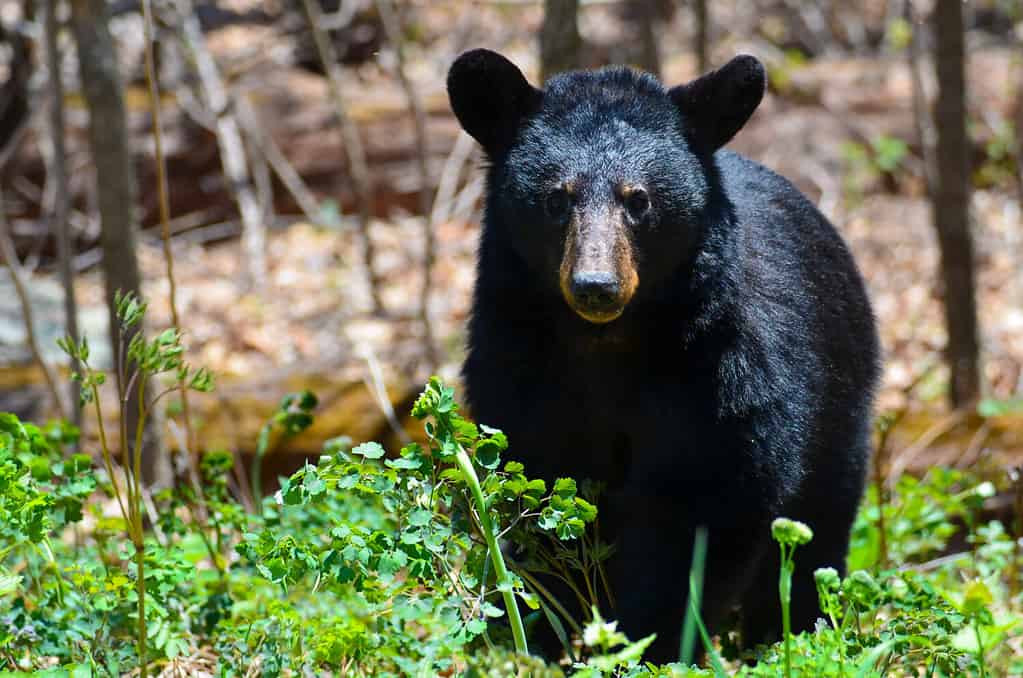
Black bears can be dangerous, but they avoid humans and are rarely a major threat.
©Orhan Cam/Shutterstock.com
Eastern Coyotes
The eastern coyote, a hybrid of coyotes and wolves, roams the outskirts of Lake Placid, navigating the woodlands with stealth and adaptability. While coyotes generally avoid human interaction, they can become more aggressive if they associate humans with food sources. It is important to secure garbage and food items and to never approach or feed coyotes. Keeping a respectful distance and observing these cunning predators from afar is the best way to appreciate their presence without compromising safety.
Insects
While Lake Placid is known for its beauty, it is not without its share of small but formidable creatures. Mosquitoes and black flies, particularly prevalent during the summer months, can be a nuisance and cause discomfort with their bites. It is advisable to use insect repellent and wear protective clothing to minimize the risk of bites and potential allergic reactions.
Respecting Wildlife and Ensuring Safety
Encountering Lake Placid’s scariest and most dangerous animals should not deter visitors from enjoying the natural wonders of the region. By understanding the behavior of these creatures, practicing responsible wilderness habits, and respecting their habitats, humans and wildlife can coexist harmoniously. Adhering to safety guidelines, being mindful of surroundings, and seeking information from local authorities or park rangers can help visitors navigate Lake Placid’s wilderness with confidence and appreciation for the incredible creatures that inhabit it.
Is Lake Placid Dangerous?
Lake Placid truly is a beautiful place, but it is normal to worry about your safety when visiting this beautiful location. When it comes down to it, there are only two factors to have in mind when determining whether or not Lake Placid is dangerous: Its terrain and its wildlife.
Like any natural setting, Lake Placid has certain inherent dangers. The area is home to venomous snakes including the Eastern timber rattlesnake and the northern copperhead, which should be avoided at all costs. Also conceivable in the nearby woods are encounters with black bears and eastern coyotes. It’s critical to be informed of these dangers and adopt the appropriate safety measures, including avoiding direct contact, protecting food supplies, and respecting their habitats.
Hiking, skiing, or participating in water sports around Lake Placid call for self-discipline and alertness. Accidents can occur, especially in isolated or difficult terrain. It is essential to plan, adhere to safety precautions, and use caution when engaging in outdoor activities. To maintain personal safety, it’s crucial to stay aware of the weather, carry the right equipment, and let others know your plans.
Numerous insects, like mosquitoes and black flies, live at Lake Placid. While their presence might be inconvenient, adopting precautions like wearing protective clothes and bug repellant can help repel them. To encourage peaceful coexistence, it is crucial to respect the wildlife of Lake Placid’s natural habitats, keep a safe distance, and avoid direct contact.
The short answer would be no, Lake Placid is not dangerous. Just respect the land and wildlife, use common sense, and you’ll enjoy your visit to this stunning natural beauty!
Thank you for reading! Have some feedback for us? Contact the AZ Animals editorial team.

